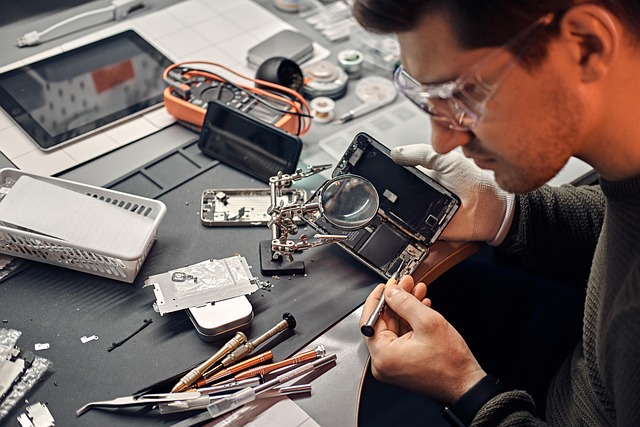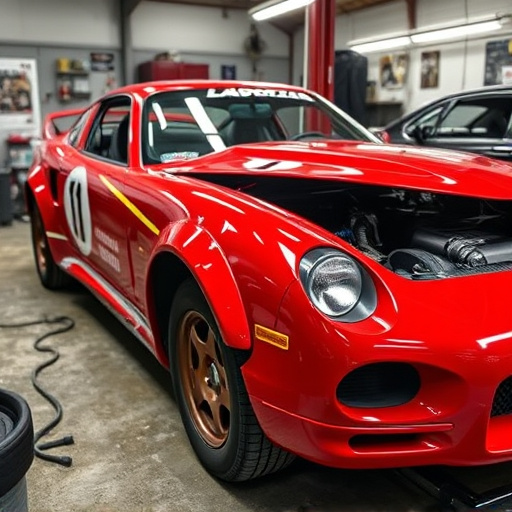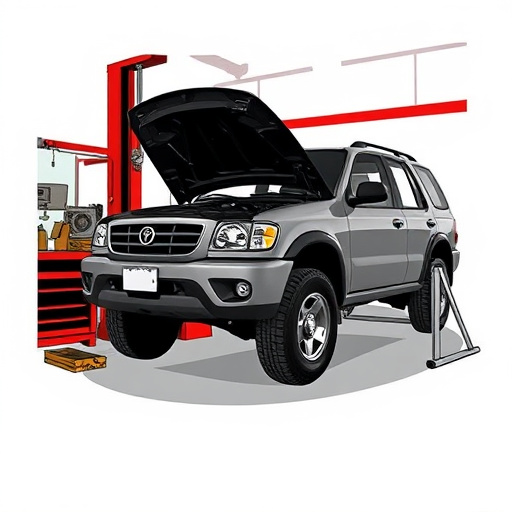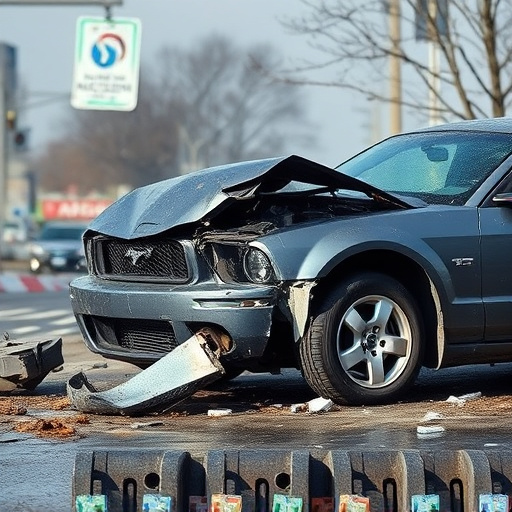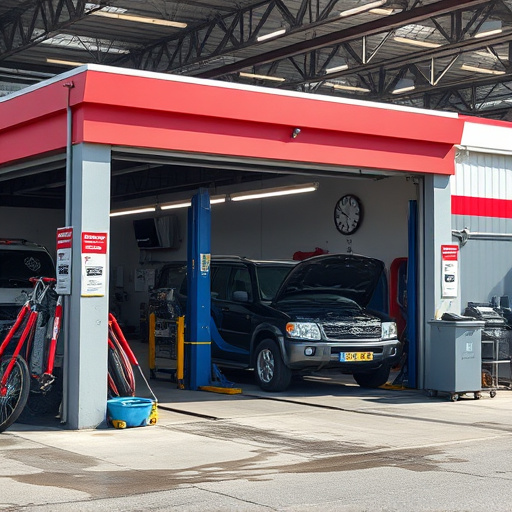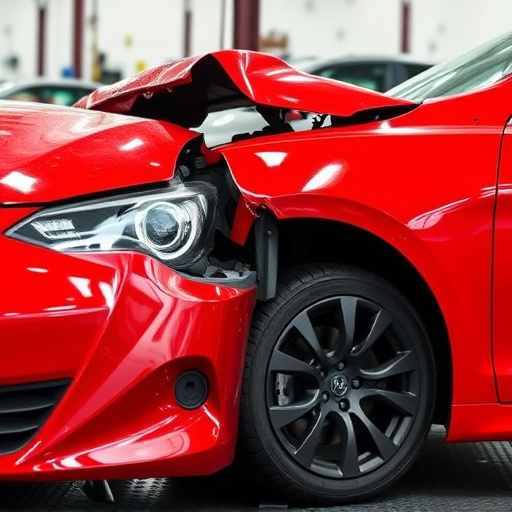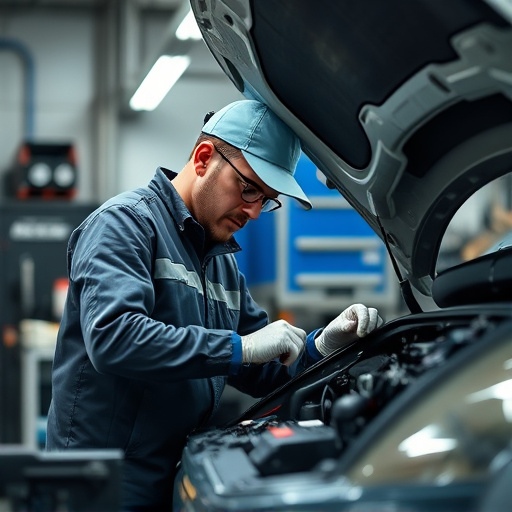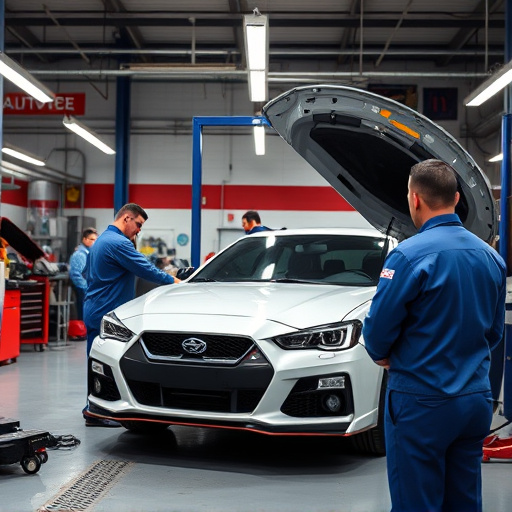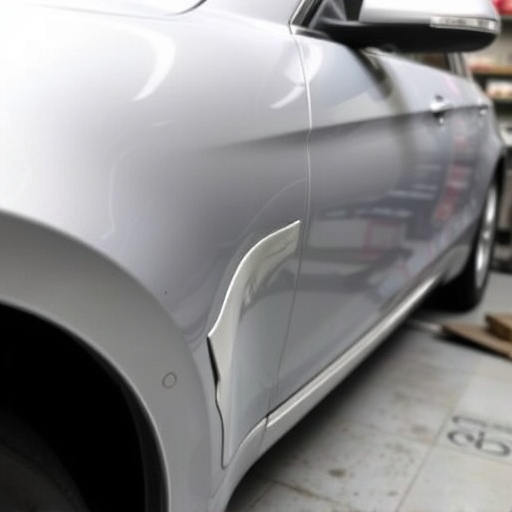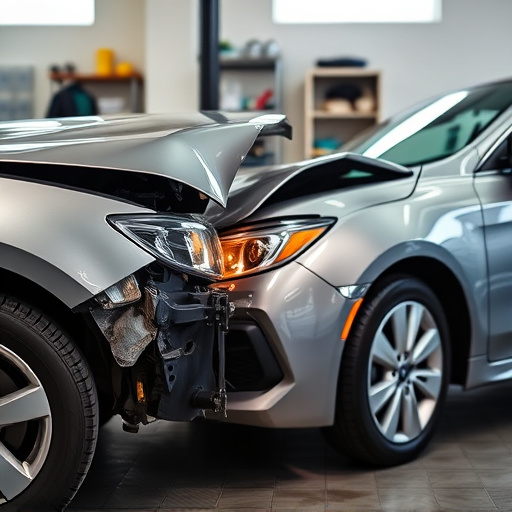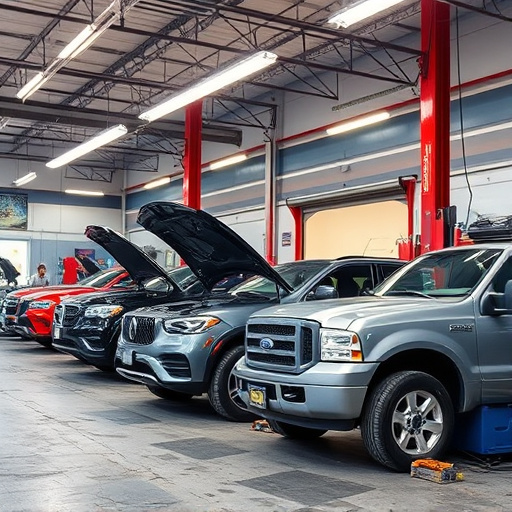TL;DR:
Steering alignment after a car collision is crucial for both safety and vehicle performance. While accidents may cause latent damage to parts like suspension, tie rods, and ball joints, proper realignment ensures these components work harmoniously. This enhances stability, prevents uneven tire wear, and reduces future risks such as handling issues and increased accident probability. Correcting steering alignment during collision repair is essential for restoring structural integrity and ensuring a safer, more reliable vehicle for the road.
Steering alignment, often overlooked after a car collision, is a critical component in ensuring optimal vehicle safety and performance. When a crash occurs, even minor ones, the impact can misalign the steering components, affecting handling, stability, and potential long-term damage. This article delves into the basics of steering alignment, explores how collisions disrupt these systems, and highlights the importance of realigning your vehicle post-collision for safety and efficiency.
- Understanding Steering Alignment: The Basics Explained
- Impact of Car Collisions on Steering Systems
- Importance and Benefits of Alignment After a Collision
Understanding Steering Alignment: The Basics Explained

Steering alignment is a fundamental aspect of your car’s performance and safety that often goes unnoticed until it’s compromised. It refers to the precise relationship between your vehicle’s steering, suspension, and wheels—ensuring they work in harmony to keep your car stable and responsive while driving. Imagine it as the body’s posture; if your steering alignment is off, it can cause a range of issues, from uneven tire wear to handling problems and even unsafe driving conditions.
After a car collision, assessing and correcting steering alignment becomes crucial. Automotive collision repair specialists employ advanced techniques and tools to measure and adjust the vehicle’s suspension components, ensuring they return to their original specifications. This process, often included in comprehensive automotive repair services, addresses any misalignment caused by the impact, thereby enhancing safety, improving handling, and preventing further damage, such as car dent removal, that may have occurred during the accident.
Impact of Car Collisions on Steering Systems

Car collisions can have significant impacts on a vehicle’s steering system. The force and impact during an accident can cause various components to malfunction or become misaligned, leading to steering problems that may not be immediately apparent. Even seemingly minor fender benders can result in damaged or bent steering parts, such as the suspension, tie rods, and ball joints. These issues can affect how a car steers and handles, potentially compromising safety while driving.
Proper steering alignment after a collision is crucial to ensure optimal vehicle performance and driver safety. Even if other aspects of the vehicle, like auto glass repair or fender repair, seem straightforward, neglecting steering alignment can lead to long-term problems. Steering systems require precision to function correctly, and any misalignment can cause uneven tire wear, handling issues, and even increase the risk of future accidents. Therefore, it’s essential to have a professional inspect and realign the steering components post-collision to maintain the vehicle’s safety and efficiency.
Importance and Benefits of Alignment After a Collision
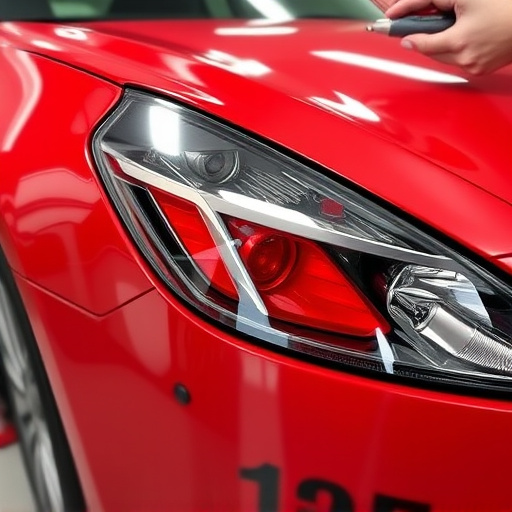
After a car collision, steering alignment is crucial for both safety and the longevity of your vehicle. While immediate concerns may focus on more visible damage like car dent repair or automotive collision repair, proper alignment should not be overlooked. Steering alignment after collision ensures that all components work together harmoniously, enhancing stability and control. This becomes especially important in preventing future issues such as uneven tire wear, steering problems, and reduced fuel efficiency—all of which can arise from misaligned wheels.
A well-aligned vehicle performs better on the road. It improves handling, allowing for smoother turns and cornering. Moreover, it reduces stress on critical parts like brakes, suspension, and tires, thus extending their lifespans. In terms of collision repair, aligning the steering system correctly is a fundamental step in returning your car to its pre-collision condition. This ensures not just cosmetic repairs but also structural integrity, making your vehicle safer and more reliable for future use.
Steering alignment is a critical aspect of car maintenance, especially after a collision. Understanding the impact of car collisions on steering systems is key to recognizing why prompt alignment is essential for safety and vehicle performance. By ensuring proper steering alignment after a collision, drivers can benefit from improved handling, reduced vibration, and extended tire life. This investment in post-collision alignment not only enhances driving experience but also contributes to the overall longevity of the vehicle’s critical steering components. Remember that when it comes to steering alignment after a collision, prioritizing this service can prevent future issues and keep your vehicle navigating smoothly on the road ahead.
